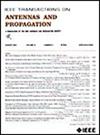基于局部时间步进策略的并行p-自适应DGTD方法的有效负载均衡方案
IF 4.6
1区 计算机科学
Q1 ENGINEERING, ELECTRICAL & ELECTRONIC
引用次数: 0
摘要
具有p-自适应和局部时间步进(LTS)策略的不连续伽辽金时域(DGTD)方法被广泛用于模拟各种电磁波现象,但由于基阶的动态变化导致计算节点之间的负载不平衡,在并行计算环境中难以实现最优性能。为了解决这一问题,提出了一种自适应负载均衡调整策略。提出的负载均衡策略基于元素扩散模型,通过合理选择和调整计算节点间的接口元素,实现计算负载均衡。在不需要重新划分整个计算域的情况下,该方法减少了负载均衡的求解时间。多个多尺度电磁实例表明,与广泛使用的ParMETIS重划分方法相比,该方法具有较低的负载均衡时间开销和较强的可扩展性,同时具有p-adaptive和LTS策略。本文章由计算机程序翻译,如有差异,请以英文原文为准。
An Efficient Load Balancing Scheme for Parallel p-Adaptive DGTD Method With Local Time Stepping Strategy
The discontinuous Galerkin time-domain (DGTD) method with p-adaptive and local time stepping (LTS) strategies, widely employed for simulating various electromagnetic wave phenomena, faces challenges in achieving optimal performance in parallel computing environments due to load imbalance among computational nodes caused by the dynamic change of base order. To address this issue, an adaptive load balancing adjustment strategy is proposed. The proposed load balancing strategy, based on the element diffusion model, achieves balanced computational loads by reasonably selecting and adjusting the interface elements among the computational nodes. Without the need of repartitioning the entire computational domain, the solution time consumed by the proposed method for the load balancing is reduced. Several multiscale electromagnetic examples are given to demonstrate that with the proposed load balancing method, fewer load balancing time overheads and enhanced scalability of the parallel DGTD algorithm with p-adaptive and LTS strategies are achieved, compared with widely used ParMETIS repartitioning method.
求助全文
通过发布文献求助,成功后即可免费获取论文全文。
去求助
来源期刊
CiteScore
10.40
自引率
28.10%
发文量
968
审稿时长
4.7 months
期刊介绍:
IEEE Transactions on Antennas and Propagation includes theoretical and experimental advances in antennas, including design and development, and in the propagation of electromagnetic waves, including scattering, diffraction, and interaction with continuous media; and applications pertaining to antennas and propagation, such as remote sensing, applied optics, and millimeter and submillimeter wave techniques

 求助内容:
求助内容: 应助结果提醒方式:
应助结果提醒方式:


